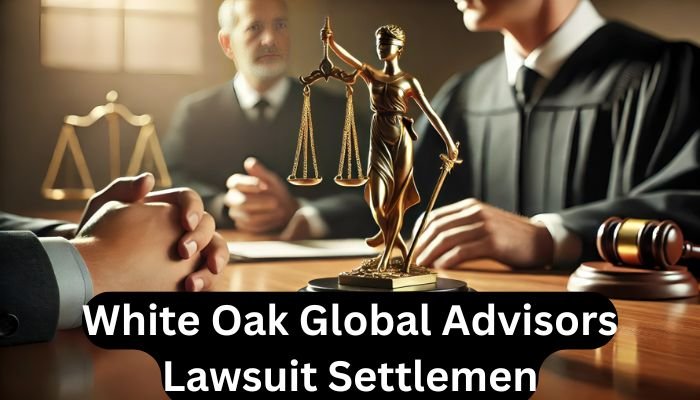In the complex world of finance and investments, legal disputes can arise from various challenges, including allegations of mismanagement or misconduct. One notable case that has captured attention in recent years is the lawsuit involving White Oak Global Advisors. This article will explore the details of the lawsuit, the settlement process, and the implications for stakeholders and the industry as a whole. By breaking down these elements, we aim to provide a comprehensive understanding of the case and its broader significance.
Background of White Oak Global Advisors
Company Overview
White Oak Global Advisors, LLC, is an investment management firm based in San Francisco, California. Founded in 2007, the firm focuses on providing capital solutions to businesses across various sectors. With a strong emphasis on private credit, White Oak manages assets for institutional investors, including pension funds, insurance companies, and family offices. The firm’s reputation has been built on its expertise in credit markets and a commitment to delivering attractive risk-adjusted returns.
Growth and Expansion
Over the years, White Oak has expanded its operations significantly, increasing its assets under management (AUM) and diversifying its investment strategies. This growth has made the firm a key player in the alternative investment space, attracting considerable attention from institutional investors seeking higher yields in a low-interest-rate environment.
White Oak’s strategic approach includes:
- Innovative Investment Strategies: The firm has developed proprietary methodologies that allow for deeper market insights and risk assessment, enabling them to identify undervalued opportunities.
- Strong Client Relationships: By fostering long-term partnerships with clients, White Oak has built a loyal investor base that trusts their expertise in navigating complex financial landscapes.
- Commitment to Responsible Investing: White Oak is known for integrating environmental, social, and governance (ESG) factors into their investment decisions, appealing to a growing segment of socially conscious investors.
The Lawsuit: Key Details

Initial Allegations
The lawsuit against White Oak Global Advisors emerged in [year], stemming from allegations of mismanagement and breach of fiduciary duty. Plaintiffs, which included investors and other stakeholders, claimed that the firm failed to act in their best interests, leading to significant financial losses. Specific allegations included:
- Misrepresentation of Investment Strategies: Plaintiffs argued that White Oak misled investors about the risk profiles and expected returns of certain funds. This included claims that the firm exaggerated the stability of its investment vehicles.
- Failure to Diversify: It was claimed that the firm did not adequately diversify its investments, exposing investors to undue risk. The concentration of investments in high-risk sectors raised alarms among stakeholders.
- Inadequate Disclosure: Investors asserted that White Oak did not provide sufficient information regarding fees, performance metrics, and the nature of investments. This lack of transparency fueled doubts about the firm’s integrity and management practices.
Legal Proceedings
Once the lawsuit was filed, it initiated a complex legal battle. The case went through various stages, including preliminary hearings, discovery, and pre-trial motions. The legal teams on both sides engaged in extensive negotiations, gathering evidence, and preparing for potential trial.
During this period, the reputation of White Oak Global Advisors was put under scrutiny. The firm issued public statements to address the allegations, asserting its commitment to transparency and responsible investment practices. However, the ongoing legal proceedings cast a shadow over its operations and raised concerns among investors.
The Settlement Process
Negotiations
After months of litigation, the parties entered into settlement negotiations. Settlements in such cases often involve extensive discussions aimed at reaching an agreement that is satisfactory to both sides. Factors influencing the negotiations included:
- Potential Damages: Both parties evaluated the potential financial impact of a trial. Given the stakes involved, a settlement could mitigate risks for both White Oak and the plaintiffs.
- Reputation Management: For White Oak, reaching a settlement could help preserve its reputation and maintain investor confidence in the long term. The firm understood that prolonged litigation could further damage its standing in the industry.
- Cost Considerations: Litigation can be expensive and time-consuming. A settlement could reduce legal costs and allow both parties to move forward without the burden of ongoing court battles.
Terms of the Settlement
In [year], the settlement was officially announced. While the specific terms of the settlement were not disclosed publicly, some key aspects typically included in such agreements are:
- Financial Compensation: The settlement likely included a monetary payout to the plaintiffs, compensating them for their alleged losses. This payment would be essential in restoring trust among investors.
- Revisions to Practices: White Oak may have agreed to implement changes in its investment practices, disclosure policies, and governance structures to prevent similar issues in the future. Such changes could include enhancing compliance protocols and regular audits.
- Non-Admission of Wrongdoing: It is common for firms to settle without admitting any wrongdoing. White Oak likely maintained that its practices were compliant with industry standards, allowing it to move forward without a tarnished reputation.
Impact on Stakeholders
The settlement had significant implications for various stakeholders, including:
- Investors: Those who were part of the lawsuit received compensation, which may have mitigated some of their losses. However, the settlement also raised questions about the firm’s practices, impacting investor sentiment. Many investors became more cautious in their dealings, prompting a demand for greater transparency.
- White Oak Employees: The legal battles and subsequent settlement likely affected employee morale and confidence in the firm’s leadership. A commitment to ethical practices would be crucial for retaining talent and ensuring employee loyalty.
- Industry Peers: The case served as a reminder for other investment firms about the importance of transparency, risk management, and adherence to fiduciary duties. It underscored the need for robust governance frameworks within the investment management sector.
Public Perception
The lawsuit and settlement not only influenced direct stakeholders but also shaped public perception of White Oak Global Advisors. The media coverage surrounding the case highlighted the risks associated with investing in alternative assets, leading to increased scrutiny of firms operating in this space.
Investors became more vigilant, often seeking firms with established track records and transparent practices. As a result, White Oak faced pressure to rebuild its brand and restore trust among current and potential clients.
Broader Implications of the Case
Regulatory Scrutiny
The White Oak case brought attention to the regulatory environment surrounding investment firms. Following high-profile lawsuits, regulators often scrutinize industry practices to ensure compliance and protect investors. This could lead to:
- Increased Regulation: Regulatory bodies may impose stricter rules on disclosure, risk management, and fiduciary responsibilities for investment firms. Such regulations aim to safeguard investor interests and enhance the overall integrity of the financial markets.
- Enhanced Oversight: There may be calls for more rigorous oversight of investment firms to prevent misconduct and ensure that they act in the best interests of their clients. Enhanced scrutiny could involve regular audits and assessments of investment strategies.
Investor Awareness
The lawsuit and settlement also highlighted the need for greater investor awareness regarding the risks associated with alternative investments. Investors are encouraged to:
- Conduct Due Diligence: Thoroughly research investment firms, their practices, and track records before committing capital. Understanding a firm’s investment philosophy and operational practices is crucial for making informed decisions.
- Understand Risks: Recognize the potential risks and complexities associated with private credit and alternative investments. This includes being aware of market fluctuations and the factors that can impact investment performance.
- Seek Transparency: Demand clear and comprehensive disclosures from investment managers regarding fees, strategies, and performance. Transparency is key to building trust and ensuring that investors are fully informed.
Evolution of Best Practices
The White Oak lawsuit has catalyzed discussions around best practices within the investment management industry. Many firms have since revisited their compliance frameworks, governance structures, and communication strategies. Key takeaways include:
- Strengthening Compliance Programs: Investment firms are prioritizing robust compliance programs to mitigate risks and ensure adherence to regulatory standards. This includes training staff on ethical practices and establishing clear channels for reporting misconduct.
- Enhancing Communication with Investors: Firms are investing in better communication strategies to keep investors informed about investment strategies, performance, and changes in management. Regular updates and transparent reporting can help build trust.
- Focus on Ethical Standards: The case has prompted a renewed focus on ethical standards in the investment community. Firms are encouraged to prioritize integrity and transparency in their dealings to protect investor interests.
For More Information Visit: Usainfo Magazine
Conclusion
The lawsuit against White Oak Global Advisors serves as a significant case study in the investment management industry, illustrating the complexities of legal disputes and their far-reaching implications. The settlement allowed both parties to move forward, but it also raised critical questions about fiduciary duties, transparency, and risk management.
As the investment landscape continues to evolve, it is essential for firms to prioritize ethical practices and robust governance frameworks. Investors, in turn, must remain vigilant and informed, advocating for their rights and ensuring that their investments align with their financial goals.
In a rapidly changing financial environment, the lessons learned from the White Oak Global Advisors lawsuit will undoubtedly resonate for years to come, shaping the future of investment management practices and regulatory oversight.





